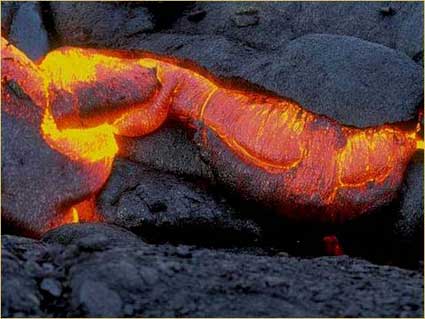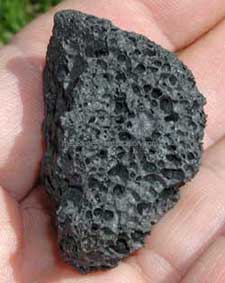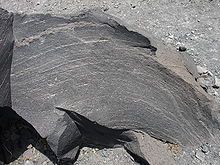basalt

From Wikipedia:
"Basalt is a common gray to black volcanic rock. It is usually fine-grained due to rapid cooling of lava on the Earth's surface. It may be porphyritic containing larger crystals in a fine matrix, or vesicular, or frothy scoria. Unweathered basalt is black or gray.
"Basalt magmas form by decompression melting of peridotite in the Earth's mantle, a process discussed in the entry for igneous rocks. The crustal portions of oceanic tectonic plates are comprised predominantly of basalt, produced from upwelling peridotite in the mantle below ocean ridges.
"The mineralogy of basalt is characterized by a preponderance of calcic plagioclase feldspar and pyroxene. Olivine (see olivine bomb slice below) can also be a significant constituent. Accessory minerals present in relatively minor amounts include iron oxides and iron-titanium oxides, such as magnetite, ulvospinel, and ilmenite. Because of the presence of such oxide minerals, basalt can acquire strong magnetic signatures as it cools, and paleomagnetic studies have made extensive use of basalt."





